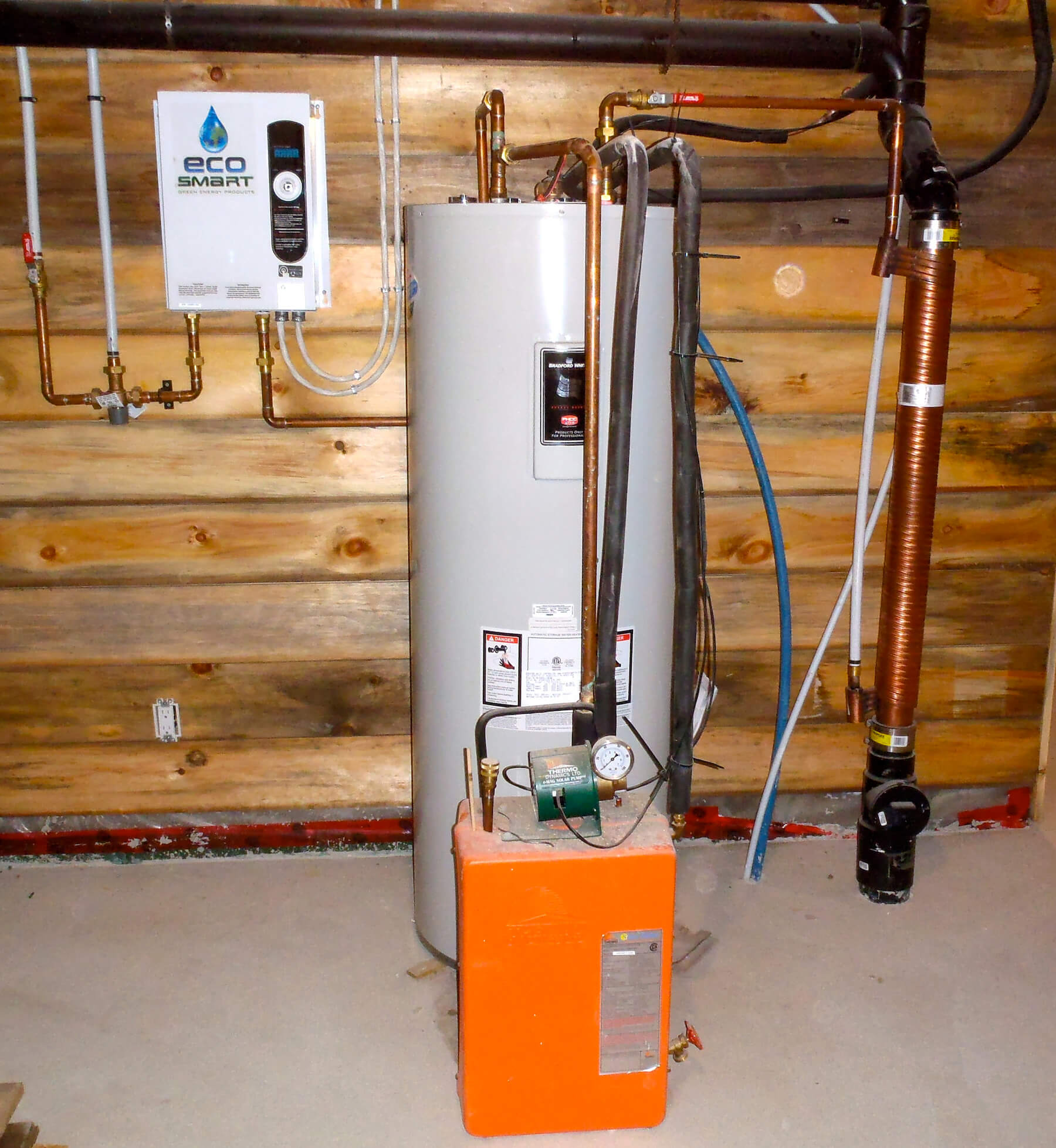The south facing roof surface of Canada’s Greenest Home just got busier capturing the energy of the sun with the installation of our solar hot water system.

Two collectors and a small PV module adorn the shade roof between the first and second floors. The system will provide between 50-75% of the home’s hot water needs.
The two 4 x 8 foot collectors should be able to provide between 50-75% of the hot water needs of the home, taking a very large burden away from other forms of heating. Most reputable estimates in our climate show that the heating of water can account for 20-30% of total energy use in a home, so by offsetting this demand with solar hot water we will hopefully be reducing overall energy use by 10-22.5 percent, which is quite significant.
The system we chose (installed by Flanagan and Sun) uses the two collectors plus a small PV panel mounted next to the collectors to power the pump (this ensures the system works if there is no grid power, avoiding overheating in the collectors if the power goes out). Solar hot water is a very simple system, with a series of copper tubes on a black metal collector plate in an insulated box behind glass. An anti-freeze solution (propylene glycol) circulates through the tubes using a solar powered pump and absorbs the sun’s heat. The hot fluid moves to a heat exchanger next to the hot water tank, where it gives its heat to the water in the tank and returns to the collectors to gather more heat. It is a very effective use of the sun’s energy.

The heat exchanger and solar pump are in the orange box next to the storage tank, where the heat is given to the water in the tank. To the right is a drain heat recovery unit, that uses outgoing hot water to pre-warm incoming water to the tank, further reducing heating needs.
The heat exchanger warms the water in the tank by thermosyphon, which means that the cooler water at the bottom of the tank is exposed to the hot tubes from the collectors. As the tank water gets warmer, it also gets less dense and will rise to the top of the hot water tank. This type of heat exchange does not require any additional pumping and has no moving parts to wear out. It also ensures that the hottest water is always at the top of the tank where it will be first to be used. The water in the tank can stay quite stratified, meaning that there can be a layer of very hot water at the top of the tank with much cooler water right below it, and because the water is drawn from the top of the tank the homeowner can have a hot shower even if the solar collectors have not been active for very long.
The tank in our system is an 80 gallon tank, and it is used just for storage of the solar heated water. The water from this tank will move through an electric on-demand heater that can sense the temperature of the incoming water and add only the amount of heat required to bring the temperature to the desired level. If the water in the tank is hot enough, the electric heater will not turn on at all. We’ll blog more about the on-demand heater when it is installed…
Solar hot water used to be considered the best “investment” in renewable energy, meaning that it had the largest impact on energy bills for the lowest financial outlay. The recent drop in PV panel costs have taken a lot of focus away from solar hot water, as in some regions (like Ontario) the subsidies for PV power can make it a better investment to install enough PV to run an electric hot water heater. However, solar thermal makes direct use of the sun’s heat in a way that is not linked to grid-tied power and to rate fluctuations. As long as the sun shines, hot water will be the result, and for that reason we still see an important role for solar thermal in a project like Canada’s Greenest Home.
